Outermost Finnmark is something else altogether. I’ve said that before, about (many?) other places in Norway. But the land has its poetics, and if Ezra Pound was right that poetry is “news that stays news,” I’d argue that the land is always newer yet. Our languages emerged in response to our experience of it, and our collective (or communal) need to navigate its threats to and demands upon our survival, and eventually, livelihood. But over time, language begins also to make the land, prefigure it, and, as the case may be (or, as the case is), unmake it. Landscape, the land-as-perceived, the image of land, the overlay, eventually comes prior to land itself. Language conditions our experience of land. It generates expectations, it delimits our imaginings of a place prior to our arrival. In a way, then, I think we relish in the surprises, the million little ways the land itself pushes up through the imaginative map the brain had already laid over everything. Maybe that’s one way to think about aesthetics: the experience of a sort of startle felt when the world itself emerges through our expectations of what the world is like. It’s no surprise, then, that these days I often run out of words; as I walk around, I’m sometimes in a constant state of startle; I catch myself laughing aloud to myself, vastly alone on mountaintops or at the outer edge of an outermost island, looking out toward the cold, gray-blue horizon of the Barents. The landscapes that have surrounded me—rather, the lands & waters themselves—have left me so often clambering over the unsatisfying sounds of words that won’t quite do. Even the three cameras I lug around fail to get at it. The eyes are greedy: Look! Look more! And the camera seduces them with its “Take! Take more!” and its “Keep it!” Sometimes I try to disobey those impulses and just stand there and see and listen. Å ta det imot. To refuse to make (and so take) an image. I’m not very good at it. I can resist anything but the shutter.
So I stand there in a flailing attempt to articulate a fitting description, to reproduce an experience, a sensation, a sight. But the thing I’m after lives in the little coves of silence in between the half-words and utterances, between the upheavals of inchoate thought, geologic, almost, as unfinished as the Arctic, with its scarp and stone and shale and snow and no trees at all. And what wind, relentlessly pushing through every nook, every narrow passage, every sound and fjord. Whistling.
In one of my favorite long poems, Tape for the Turn of the Year, A. R. Ammons thinks about how to represent the ocean’s floor by “sounding” it, how deep is it here, and here, and here. He writes:
soundings twenty miles
apart
will approximate reality:
(tho you could miss
a fabulous cleft
or cone):
only infinite (impossible)
samplings could
produce a map symbolic
of the truth:
To my ear, Ammons celebrates the possibility of “missing” that fabulous cleft or cone, those realities that elude our representations, that don’t make it onto the map. There’s a wildness in it, and a strange, if disorienting, comfort in knowing we can’t know everything. In that sense I’m a Romantic. Can’t get away from it. I rove around a Norway half-created, half-perceived. It’s awful sweet.
Outer Finnmark is one of these ytterste places. I’ve spent the last full week in the ytterste steder (the outermost places) of Norway’s fastland. Two days in Kirkenes, the last town before the Russian land-border; two days in Vardø, the easternmost town in Norway, suspended in the Barents Sea, overhanging Russia, at 30°06’38″E; and three days in Honningsvåg, the northernmost town (with bystatus) in Norway at 70°58’33″N, situated on Magerøy (Meager Island), in Nordkapp kommune—the island municipality of North Cape, the northernmost point in Europe proper at 71°10’21″N. This year has thus brought me to both Europe’s westernmost (Látrabjarg in Iceland at 24°30’00″W) and northernmost (Nordkapp in Norway) points (not to mention Svalbard). I treasure these experiences. And how strange the experience of memory will be—already is—alongside the images and photographs, the shadows, duplicitous in the illusion of accuracy they present. How many cones and clefts have I seen? What things and places and people have I encountered that I cannot represent? How wonderful to imagine them, fullest in their lives.
Vardø, in particular, stands out. There’s a sort of magic surrounding that outermost of Norwegian places. I had a remarkably difficult time arranging housing in Vardø; as it turns out, I happened upon the weekend of Yukigassen, the annual Nordic Championship in snøballkasting! (You can guess what that is without translation, I suspect.) Teams from Russia, Finland, and Norway descend on the island each year for this Japanese snowball war. What luck to stumble upon it!
Amid the surprisingly lively stemning of Yukigassen (the Opening Ceremonies, for one, included a hell of a fireworks show), Vardø is permeated with a quietly startling magic. It began with the most shocking nordlys I’ve yet seen. I had taken a four-hour bus tour all the way around Varangerfjorden to get to Vardø from Kirkenes, and for half the way, as darkness fell, I saw the aurora shimmering through the bus’s tinted and winter-grit-spattered windows, pressing my face and hands against them to catch what glimpses I could. Frustrating. Those rare, clear skies, and all. But I got to Vardø, settled into my room, and, with recommendations from my host, found my way toward the water and the Witchhunt memorial (more on that in a moment). The northern lights had neither quit nor dimmed: I stood, in biting cold wind, with stinging fingertips inside my gloves, directly underneath a flush of banners moving as in a gale, motion and light the length of the sky, and wide. Along the horizon, I saw the lights as slowly fluttering flags; but looking straight upwards (the North Star, Polaris, directly above my head), the lights were swirling poles of green, with whorls of white and faint reds in erratic, but holistic motion. Not choreographed; not that. But contiguous, connected. The sweetness of disturbance, the unseen sun startling the darkness of the Arctic sky into a play of half-lights, not quite radiant, but luminous, looming. Very much alive.
I watched these lights some steps away from another set of lights, much smaller: the Steilneset Minnested is a memorial commemorating the hundreds of killings of suspected witches in the 1600s. I hadn’t realized before my visit that Vardø is Norway’s Salem. Despite its remoteness, the town is among Norway’s older places. Long has it had a church. As my host at school in Vardø there pointed out, in those days, when they built a church someplace, it meant serious business; establishing a church was a kind of flag-planting, a signal of dominance over a place, and of its (often strategic) importance to the development of the church’s expanding regional power. And so, out at—beyond, even—the edge of things, the old church hunted the practitioners of trolldom, witchery, dark magic. The monument consists of a “memorial hall” designed by Swiss architect Peter Zumthor, and Flammehuset, The Flame House, a moving installation by Louise Bourgeois, consisting of a flaming chair surrounded in a ring by giant, foreboding vanity mirrors. So much in it. Stunning works. These works are open and free twenty-four hours a day. I first visited the memorial hall at night, with the wind outside, its rush reduced to an eerie howl inside, where I read about those who had been accused and killed by the church, by their neighbors, for trolldom.
Vardø’s origins are in its strategic location as a trading post for Finnish, Russian, and Norwegian goods. Vardø fortress dates from the early 14th century. Predictably, the modern history of Vardø is (like all of coastal Norway) in fish. The Barents is, I’ve been told, among the healthiest fisheries in the world, especially for cod. Late modernity hasn’t, however, been entirely kind. Its population has come and gone in waves, dependent on the fisheries and the whimsical consequences of modernizing the craft of fishing (not unlike what’s happened to once-lively farm-towns in the Midwest). Nazi-occupied Vardø (much like Kirkenes to the south across Varangerfjorden) was bombed repeatedly by the Russians during WWII and was reconstructed. Among buildings in use are boarded up, vacant, dilapidated buildings. A fine house here, an empty clapboard shack nextdoor; here, a wharf, fishing boats overwintering; across the harbor, a rusted out fish warehouse, apparently long abandoned. But I marked quickly the enduring warmth of the people of Vardø. Among Norwegians, infamously reserved, vardøværinger (residents of Vardø) are openly curious and welcoming. I was “warned” I’d be asked about who I was, what I was doing there, etc., if vardøværinger didn’t recognize me. And sure enough, on my last morning, walking down a street, an older man with wizened, weathered features, approached me, and asked outright: “E du kjent?” (“Are you known around here)?” I laughed and replied, “Nei, jeg er ikke kjent her!” (“No, I’m not known around here!”), and so we had a lovely conversation about who I was, why I was there. He was a sjømann in the old days, a sailor, and had, back in the seventies, sailed to the ports of New Orleans, Philadelphia, and New York. He wished me “Lykke til videre”, with a little more verve than the usual. It means “Good luck further along,” and it’s a pretty standard Norwegian farewell that betrays, I think, a rather traveling spirit beneath the seeming homeboundedness of the people.
When I met him, I was looking some of for Vardø’s many works of gatekunst, street art. The island is home to a living collection truly beautiful works, some visible and demanding, open to all passers-by, whether attentive or casual, and others obscured along unwalked ways, in nooks and crannies, overhung and hidden, made to be sought out, almost as fabulous clefts or cones that overlookers overlook, that can’t (and shouldn’t) find their way onto the map. Many of the works are phrases in English—a sort of ambivalent testament to the very force that has pressed vardøværinger these last decades out of their traditional homes and works and crafts. COD IS GREAT. ETERNAL LIGHT / ETERNAL NIGHT. SEA FEVER. Whether word or image, the works comment and respond to a world-in-place that doesn’t want to go away, that refuses, even while the world’s distant markets push and push and push on its livelihood. In that resistance, I found a whole lot of life, a whole lot of human animal warmth in Vardø. A special place, uglemmelig.
From Vardø, I bought passage on Polarlys, one of the Hurtigrute ships, along the northeastern coast of Finnmark to Honningsvåg, on Magerøy. Both Hammerfest and Honningsvåg lay claim to “the world’s northernmost city” (verdens nordligste by). Although Honningsvåg lies further to the north than Hammerfest, it was granted bystatus in a period when the requirements for city-status were lighter (today, a town has to have 5000 or more citizens to count; Honningsvåg has fewer). But it is, in any case, the administrative center of Nordkapp, Norway’s northernmost kommune. I arrived off the boat early on a crystalline Sunday morning, with sun and polar-blue skies. I had the day to live in, so I stashed my backpack and hiked up to the town’s local mountain (something I’ve become accustomed to in my travels), where I stood and stood and stood. One of the special qualities of outer Finnmark is its missing trees: nothing grows there. Nordkapp’s island, Magerøy, means “meager island,” appropriately (though one could pun on “stomachs”—mager—as well). Treelessness makes for startling landscapes, especially, to my sensibilities, in winter. I splurged on a touristy trip to Nordkapp itself, slightly bloated in its cost (you have to pay to visit this northernmost point; to me, it’s among Norway’s few real tourist traps, flying in the face of allmennsrett). But I’ve been longing to stand there at the top of Norway since I was a child. It was worth it, in the end, to stand there, looking due north in (surprise!) the biting wind whips around the stark, barren, treeless, cliffsides. (Notably, the marker, and corresponding toursit chalet, at Nordkapp isn’t the true northernmost point; that lies on a less dramatic point across a small inlet to the west; one day I’d like to hike there. For free.)
Before leaving Honningsvåg, however, I was given the fullness of Finnmark: two days after that gorgeous Sunday, the town was transformed, whipped up into full storm, gale-force winds. The Barents Sea leapt over harbor and haven and salted the air (and the face). Though it wasn’t raining, your face was wetted by a walk in those winds, and once again in shelter, you felt the salt in the corners of your eyes and mouth. The sea was in the air. My flight out of Honnignsvåg was cancelled, so I was put up in a hotel and rerouted on a bus south to Lakselv with flight connections from there to Svolvær in Lofoten, my destination for visits the next day. At six the next morning, as I woke to make the bus, the airport called (a personal call from airport—that’s how small are these outermost airports!). The road out of town was closed. Yes, the road. Not only full storm, but orkan, hurricane-force winds, were measured in the run of the previous twenty-four hours. Wow. I’ll spare you more details, reader (assuming you’re still reading) but I opted to try the early flight out, so hopped a quick taxi to the Honningsvåg airport, where I flew to Hammerfest, hoping to make connections further to Tromsø, and so to Bodø and finally to Svolvær. Having had to cancel one day of a three-day visit to Svolvær (the teachers there were understanding; they, too, are Northern-Norwegians—they, too, live in the wind!), I arrived a little before 10pm. A fifteen hour trip in five airports to travel some 600 km (as the plane flies). That’s the north. And I’m thankful for it.
I’m in love with Northern Norway. How odd to be again in Oslo, with spring arriving, taking full steps on the solid ground with no fear of falling on the treacherous ice, the warmth of the sun suddenly palpable, after months, now, without it, and longing a little after those ytterste, outermost, winter-polished gems of the North.
And so, as ever, images.
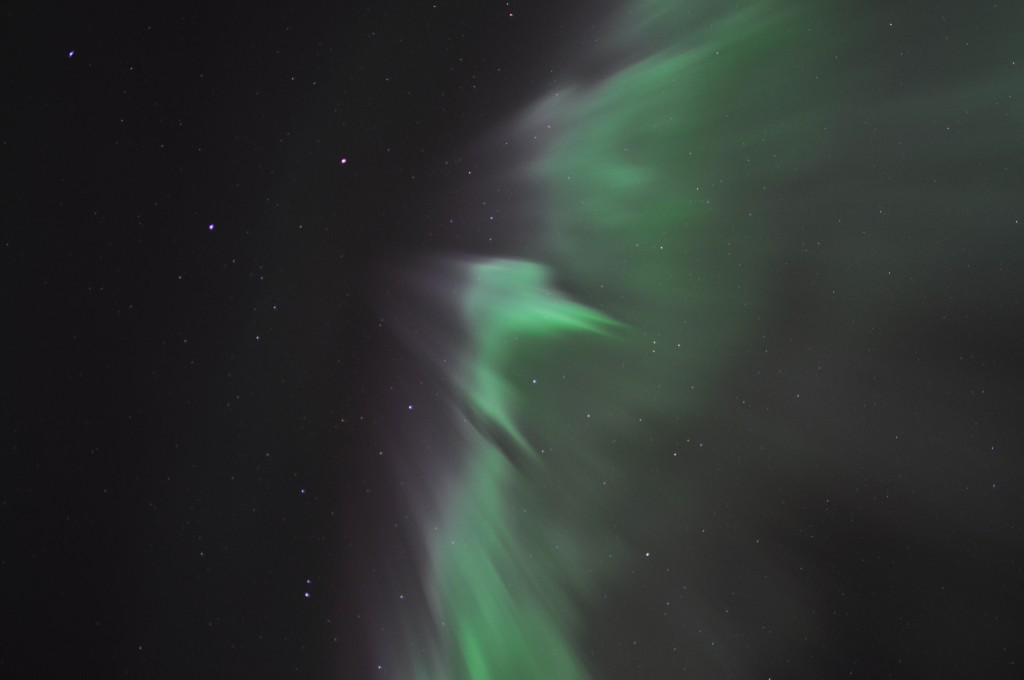
The lights.
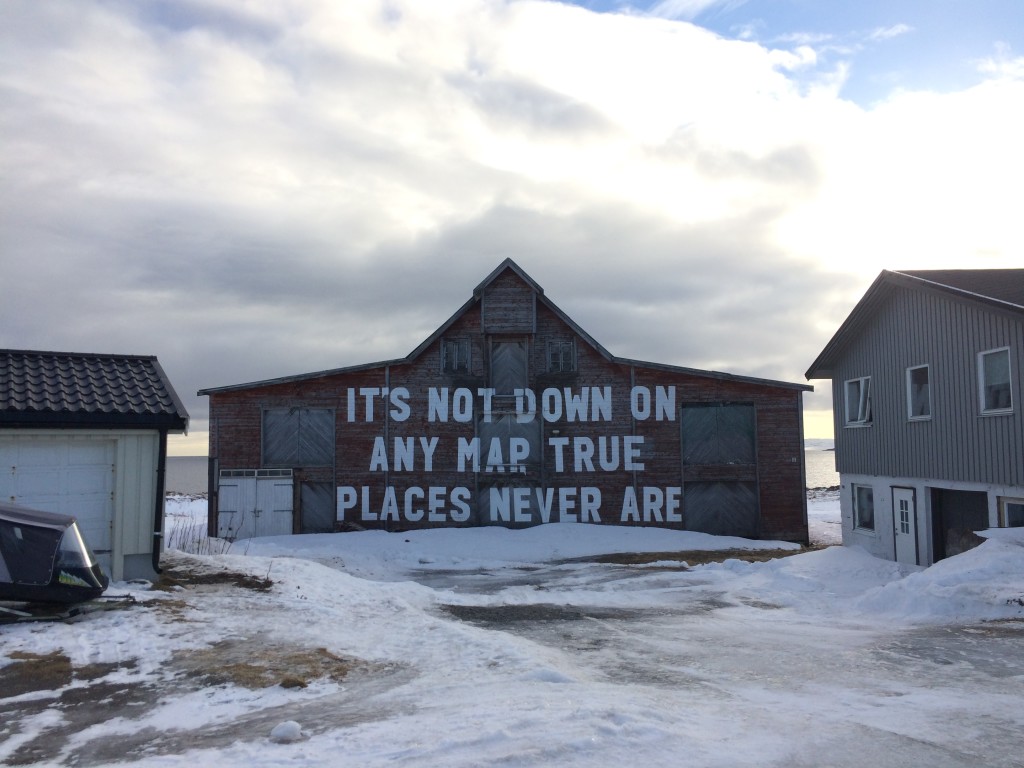
Vardø. I can’t keep Moby-Dick out of this blog: “Queequeg was a native of Rokovoko, an island far away to the West and South. It is not down in any map; true places never are.”
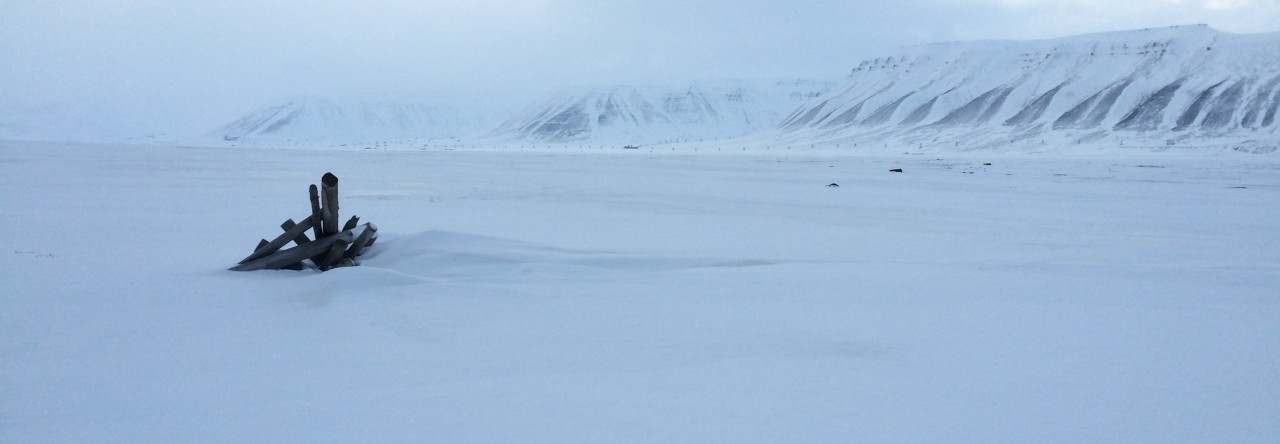
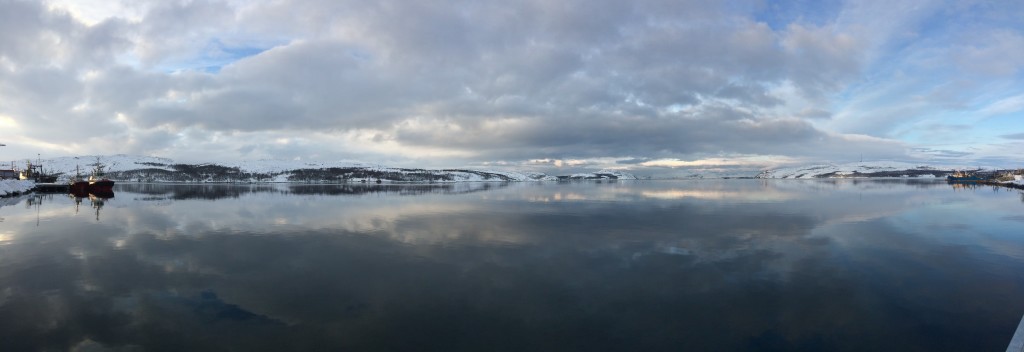
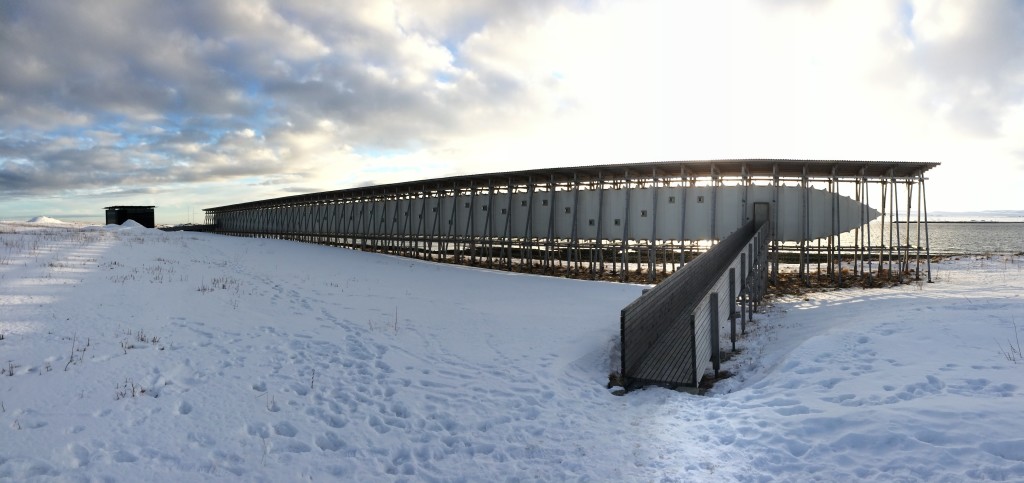

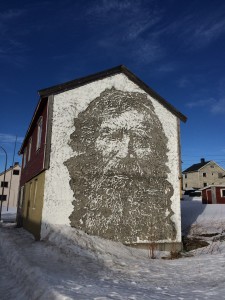
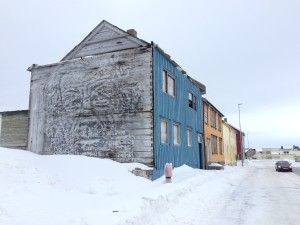



Adina Meyer
Wow, incredible. Did you feel a Presence that disturbed you with the job of elevated thoughts? I sure did just reading this. I want to go to the North.
Andy
I did! Even though I didn’t capitalize Presence.
Andy
Also, Adina, that was one of the greater typos: the job of elevated thoughts. Lifting thoughts is hard!